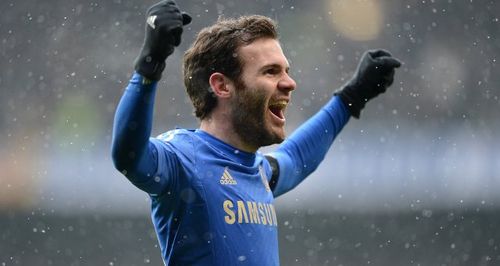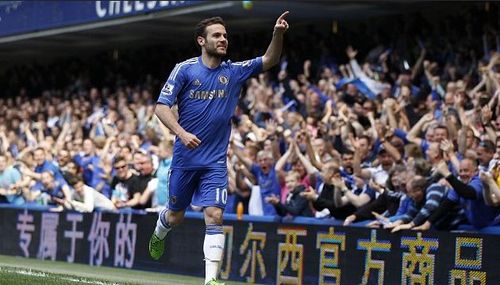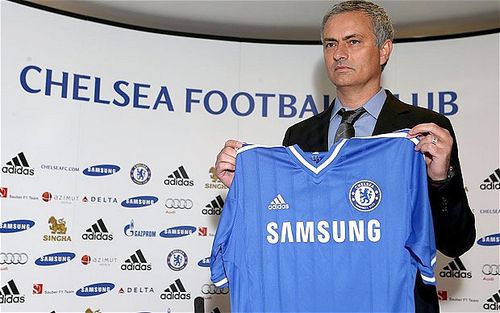
Is it time to leave? The sorry state of Juan Mata

If anybody had suggested last May that we would be talking about Juan Mata leaving the club at this time of the year, probably they would have been greeted with amusement, or heavily ridiculed. Considering the present situation, that prediction, which seemed way off the mark at the time, looks to have hit the bull’s eye.
Last year, under Rafael Benitez, Mata was a regular – the playmaker in-chief, the architect, the assist machine, and the occasional goal scorer. While the new poster boy, Eden Hazard, seemed to have lost a bit of the aura that raced him away from his markers and won penalties in pretty much every league game for a few months, the little Spaniard still had his magical touch intact. Posed a question on who would most likely start the next game if only one among the two could be selected, you could safely answer in favor of the Spaniard.
In the midst of Benitez’s rotation policy, Mata was the constant – the indispensable one, the heart and soul of the team. When he played well, Chelsea played well, and usually won. The rest, like Hazard and to an even lesser extent, Oscar, were there merely to make the show look good. John Terry was no more a regular, Frank Lampard wasn’t getting a new contract no matter how well he played, Didier Drogba was long gone and the void left by his departure was being felt. The fans had to make do with a manager they genuinely disliked. They had all the right reasons to be unhappy, but it was Mata’s performances which eventually put a smile on their faces and kept the team ticking. True, Hazard was at an extremely high level for a young first season-er, but he tended to go missing once in a while and that was a bit of a concern. Come the end of the season, Mata was voted as the club’s best player by the fans for the second year running.

Juan Mata – during happier times
So, what made fans love Juan Mata so much? The stats provide an answer.
Statistical review of two seasons (stats courtesy: espnfc.com)
In the 2012-13 season, Mata scored 20 goals and assisted 28 in 64 appearances (considered across all competitions). That is, he contributed to a goal thrice in every four appearances. Interpreting in another way, if he is on the pitch, there is a 75% chance that Chelsea will score. In the season before, Mata scored 12 goals and assisted 20, in 54 appearances, which is close to a 60% probability that Chelsea will score when he plays. Cumulatively, over two seasons, Mata appeared 118 times and was involved in 80 goals. This means, the probability of Chelsea scoring is close to 68% if he plays. An incredible achievement indeed!
For a comparison, David Silva plays the same role for Manchester City. In 91 appearances over two seasons (2011-12 and 2012-13), Silva was involved in 43 goals (scored 13 times and assisted 30) – a goal probability of 47% when he is on the pitch. This suggests that City will probably score when Silva isn’t playing! Shocking indeed! Yet, Silva is picked ahead of Mata for Spain!
Where did it go wrong?

Enter Jose Mourinho. The above stats are purely in an attacking sense. They do not provide any data on defensive aspects like successful tackles and interceptions. Unfortunately for Mata, the new manager was more focused on the latter aspect of the game. The summer transfer window brought with it its own share of stories – Mourinho being ‘unconvinced’ about Mata and Luiz, being the most laughable one from a Chelsea perspective; the Rooney-Mata swap deal story coming a close second.
Come the first game under Mourinho, Mata was left on the bench – eventually an unused sub. Maybe he had been carrying a minor injury not worth risking, or maybe Hull City were too small an opponent to play him. Maybe he needed rest following Spain’s deep run in the Confederations Cup. One match as an unused substitute was not too much of a concern. He would start the next one anyway. But there was another train of thought, one of concern.
On the opening day of the season, the manager has the full squad to choose from. Hence, it usually reflects what he thinks is his best eleven. Mata was not in it. He did start the next game however, but it lasted just an hour. His first full game was against Swindon Town in the League Cup, while in the Premier League, he had to wait until the first of December to complete the full 90 minutes. Of course, fans were frustrated. The following banner sums it up.

A banner that appeared in the stands in mid-September
The experts soon got into what they do best and found out the reason: Mata didn’t track back much and help out defensively. Apparently, in all his past teams, Mourinho had room for only one player with no defensive responsibility – Wesley Sneijder and Cristiano Ronaldo being granted that luxury at Inter Milan and Real Madrid respectively. Both were miles ahead (in an attacking sense) of their midfield teammates at their respective clubs at that time, but at Chelsea, he had the freedom to choose – something he didn’t have earlier. Among Hazard, Mata and Oscar, one would have to improve significantly on the defensive side of their game, another would be given the luxury of being exempted from that work, while the other would have to be frozen out.
Now, Hazard cost 32 million and arrived with a big reputation and promise, breathtaking dribbling skills, and had had an amazing debut season. He was to be given the luxury role. Either Oscar or Mata had to work on their defensive aspects, and for reasons best known to him, Mourinho chose Oscar as his ‘preferred No. 10′. Possibly, since Oscar is also capable of playing in central midfield, he may have a better understanding about defending than Mata. Either ways, the end result was that Mata was out.